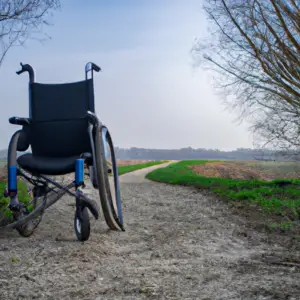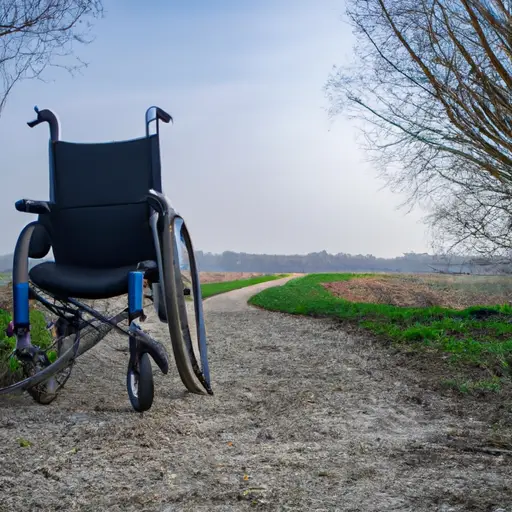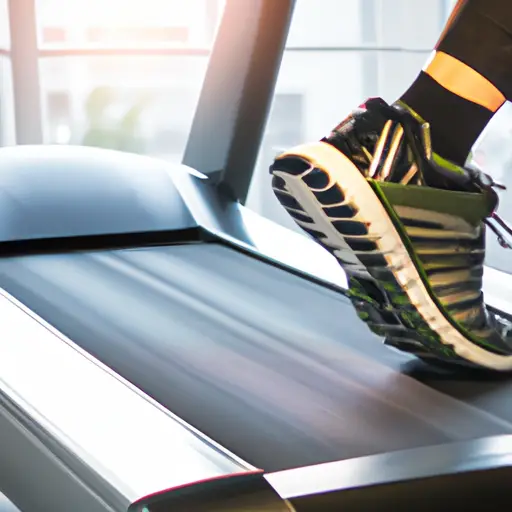Limited Mobility: Understanding and Exercising with it
Life with limited mobility can be a challenge. But that doesn’t mean you can’t stay active! Exercise is still important for overall health and wellbeing, even if you may have to do it differently. In this article, we’ll discuss how to exercise with limited mobility, the types of exercises and the many benefits. Plus, we’ll offer some tips on how to get started.
So what do we mean by “limited mobility”? Simply put, this term refers to any difficulty you may have getting around. It could include anything from chronic pain, arthritis, spinal conditions or physical disabilities, like amputations. Limited mobility can affect all aspects of your life, but there are ways you can still stay active and enjoy the benefits of exercising.
Types of Exercises for Limited Mobility
Whether you’ve got limited mobility due to a long-term disability or an otherwise temporary situation, there are plenty of exercises you can still do! It’s all about finding something that works with your body. Here are three types of exercises that are great for those with limited mobility:
Low Impact Exercises
Low impact exercises are perfect if you’re looking to stay active while avoiding any further damage to your joints. Walking, swimming and cycling are three examples of exercises that don’t put too much pressure on your body, but can still help build strength in the muscles. Yoga and Pilates are also low impact forms of exercise which often focus on breathing techniques to strengthen the core.
Resistance Training
Resistance training can be designed to suit your needs – whether it’s weights, bands, pulleys or other equipment like resistance balls. Working with a physical trainer is highly recommended, so they can create a routine tailored to your needs. This will enable you to work your muscles without putting too much strain or pressure on them. Plus, when done regularly, resistance training can help build stronger and more toned muscles.

Isometric exercises don’t involve joint movement; instead, you use your own body weight to hold stationary positions for a set amount of time. Examples include plank poses, wall sits, leg raises and bridge exercises. These are great for strengthening and stretching muscles, as well as improving balance and posture.
Benefits of Exercising with Limited Mobility
When you have limited mobility, it can be tough to stay active. But it’s important to find ways to keep your body moving — the benefits are worth it! Here’s what you can expect when you exercise with limited mobility.
First off, improved balance and coordination. You might not think twice about standing on one foot, tilting your head back and forth, or completing any number of ordinary motions — but if you’ve got a condition that limits your ability to move around, then these tasks can become major accomplishments. When you work out, you’ll be able to strengthen your muscles, giving you more control over your movements and improving your balance.
The next major benefit of exercising with limited mobility is reduced risk of falls. When you’re able to hone your balance and coordination techniques, you can help reduce your risk of getting injured in an accidental fall. Falls aren’t just dangerous, they can also be embarrassing. By working out and honing your skills, you’ll be able to stave off slips and tumbles that could leave you worse off than you were before.
Finally, exercising with limited mobility can improve your cardiovascular health. Keeping your heart rate up through physical activity helps reduce cholesterol and blood pressure levels — both key indicators of overall heart health. Plus, it can give you more energy throughout the day and even help you get a better night’s sleep.
Tips for Exercising with Limited Mobility
So if you’ve got limited mobility, but still want to keep active – where do you start? First things first – make sure to talk to a doctor or physical therapist. They’ll be able to give you tips on how to exercise safely and might recommend a few exercises to start with. Plus, they can teach you all about what types of equipment are available, from weight machines to aquatic exercises.
Once you’ve got the okay from your doctor and know the exercises to do, it’s time to get to work! But do it slow – gradually increase the intensity of your routine and if something causes pain, stop right away. Listen to your body because there’s no point in pushing yourself too hard.
Last, but not least – find the right equipment. It’ll help increase the intensity of your exercise and, most importantly, keep you safe while working out. For instance, you can use a stability ball to increase the difficulty of some movements, like push-ups or planks. Or, you could consider investing in a wheelchair ramp that allows you to access different areas to exercise.
Remember, even if you have limited mobility, exercising is just as important and achievable as it is for everyone else. So find a way to stay active that works for you and enjoy the multiple benefits that come with it!
Conclusion: Unlock The Benefits of Exercising with Limited Mobility
We all know how important it is to stay active, but if you’re someone with limited mobility, you might be wondering how you can still exercise. As it turns out, there are plenty of options available! Low-impact exercises, resistance training and isometric exercises are all great ways of getting your body moving while staying within your limitations. And the benefits? Improved balance and coordination, reduced risk of falls, and improved cardiovascular health – just to name a few.
So if you’re living with limited mobility, don’t let that stop you from getting into shape! Just be sure to talk to your doctor or physical therapist first to ensure safety and find the right equipment for the job. Then take it slow and try out different kinds of exercises until you find something that works for you. Don’t be afraid to get creative and have fun! Before long you’ll be unlocking the full benefits of exercising with limited mobility.
Exercising with Mobility
How can I improve my mobility exercise?
As someone who values mobility, I’m always looking for new ways to challenge and improve my exercises. Sure, there are traditional methods that can help me to stay limber, but I’ve noticed that if I want to really up my game, I need to incorporate some expert advice. Here are a few ideas that might help:
First, try to mix up the intensity. Just going through the same routine every day can get tedious, so I like to add some burst of speed or intensity to the movements. This will help keep my muscles guessing, which can lead to quicker improvements in my mobility.
Second, don’t forget about rest days. It’s easy to get caught up in the grind, but it’s important to take a day or two off to give my body a chance to recover from the intense workouts. That way, when I come back, I’ll be ready to go full speed ahead.
Finally, pay attention to how you move. Sure, it might feel weird, but really focusing on how my body is working as I do the exercises can be hugely beneficial. For instance, I can use certain techniques to engage my core muscles more deeply, which helps with balance and stability.
By following these tips and committing to a regular routine, I can definitely improve my mobility exercises and take my game to the next level.
How do you adapt to exercise when space is limited?
Adapting to exercise when space is limited can be tricky, but it’s definitely doable and worth the effort. You just gotta get a little creative! For my part, I like to take advantage of whatever equipment is available. If the space is tight, I’ll use something like a stability ball or resistance bands. They don’t take up much space but they can still give you a good workout.
Another great option for limited space is bodyweight exercises. Squats, lunges, push-ups, and planks are all great options that require zero equipment and very little space. Plus, you can always modify exercises to make them tougher or easier depending on your fitness level. And if that’s not enough, you can always find some space-friendly HIIT or cardio workouts to kick it up a notch.
Finally, don’t forget about the great outdoors! Fresh air and Vitamin D can do wonders for your mental and physical health. And you can always find a park, beach, or mountain trail to get your sweat on. So if you ever find yourself stuck in a tight space, don’t forget that nature is right outside your door.
What are 4 types of training we can use to improve your mobility?
As someone who cares deeply about mobility, I’m always on the lookout for ways to improve. Four training techniques that can do just that include foam rolling, dynamic stretching, corrective exercises, and ballistic stretching.
Foam rolling is an excellent way to help your muscles relax and heal. It helps to increase blood flow and flexibility, which can ultimately help improve your mobility. Dynamic stretching is another great option, as it allows you to move through larger ranges of motion while focusing on stretching and increasing the range of motion in each joint.
Corrective exercises can also be a great tool for improving your mobility. These exercises help to restore balance and stability in your body, which can help you move better. Finally, ballistic stretching is a great way to increase your range of motion and improve your speed and agility. This type of stretching involves using momentum to move your body in a motion that you wouldn’t be able to do without it.
These four training techniques can be used in combination to help improve your mobility, making sure you stay agile and ready for whatever comes your way!
tips for exercising with limited mobility
As someone with limited mobility, it can be difficult to stay active and healthy. That said, there are a few tips I can share from personal experience that may be of help.
First and foremost, start slow. Don’t go into any exercise regime expecting miracles overnight. Ramp up gradually and keep track of your progress. That way, you won’t overstretch yourself and you’ll be able to measure your improvements.
Second, be mindful of your limitations, but don’t let them become an excuse. Remember that no matter your circumstances, there are always ways to move your body and stay in shape. For example, there are low-impact exercises such as yoga, tai chi, swimming and aqua aerobics; supportive equipment like canes, wheelchairs and walkers; and adaptive exercise equipment like recumbent bikes and moveable massage tables.
Third, don’t neglect benefits of simple activities. Most of us can manage small everyday movements like stretching, walking, standing, or dancing. They all provide important physical and mental benefits. Plus, they often don’t require any special equipment.
Finally, find an activity you enjoy. This will make it easier to stick with it and more likely that you’ll reach your goals. So don’t be afraid to get creative and experiment with different kinds of exercise – it’s your body and you know it best.






